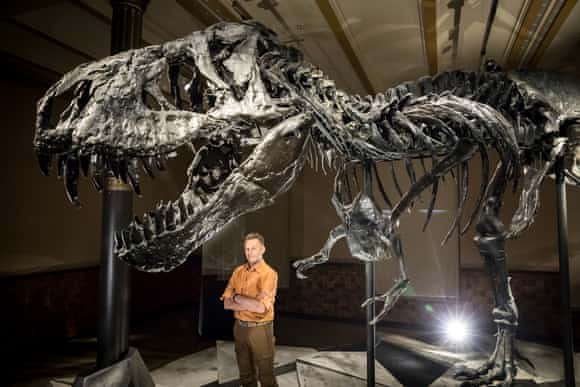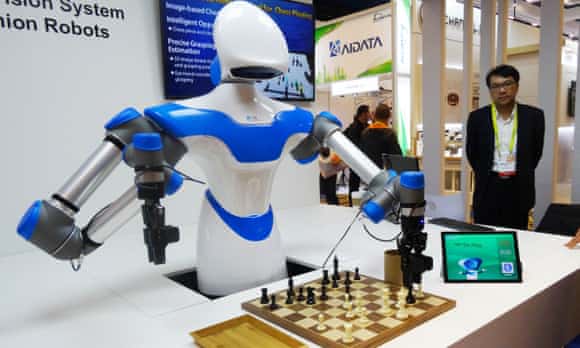 | Lab notes: from zero aliens to a whopping prime, 2018 is already racking up the digits |  |  I declare 2018 the year of Numberwang. Photograph: Alamy
| Tash Reith-Banks
| This week's biggest stories We're going to start big: with over 23m digits. That's right, not even a week into 2018 and records have already tumbled at the discovery of the largest prime number ever to be found - less than a year after its predecessor. It's exciting, it a math-sy sort of way, but for my money the most intriguing story this week was the genetic analysis of an ice age baby girl which has revealed a new group of Native Americans: the ancient Beringians. One of our experts also unpacked what the ancient DNA discovery tells us about Native American ancestry, and it's a fascinating read. A less pleasing genetic revelation (well, for those of us who enjoyed a sherry or two this Christmas) is the suggestion that alcohol can cause irreversible genetic damage to stem cells. Scientists made the discovery while trying to understand the link between drinking and cancer. On the plus side, there has been a big breakthrough in the quest to find an effective, non-addictive alternative to opioid painkillers – some much-needed good news as the global opioid addiction crisis worsens. Finally, it's bad news, but so damn interesting: an analysis of 'Tabby's star' (also known as KIC 8462852) has shown that there's no alien megastructure around it. Still, it's early days yet: let's see where the hunt for alien life goes in 2018. More news from Guardian Science | Sign up to Lab notes
___ Fascinating feature |  |  A "smart qamutiq" – a traditional sledge fitted out with sensors that is towed behind a snowmobile along routes the community use most. Photograph: Courtesy of Trevor Bell, Memorial University of Newfoundland
| It's always great to see science changing people's lives in a practical sense, and this feature from science editor Ian Sample highlights a particularly good example. In northern Canada, warmer winters mean lethally unpredictable ice, leaving already isolated communities too frightened to venture out for food and fuel. Enter the "smart ice" project, which uses modern tech to boost traditional knowledge. ___ Straight from the lab – top picks from our experts on the blog network |  |  How can you get from a skeleton like this to a flesh and blood reconstruction? Photograph: Gordon Welters/BBC/Talesmith/ Cineflix/Gordon Welters
| The Real T. rex with Chris Packham: an attempt at a truthful Tyrannosaurus | Lost Worlds Revisited Tyrannosaurus rex is probably the most famous extinct animal, but thanks to Hollywood and various out-of-date books, there are a lot of misconceptions out there about this incredible dinosaur. There is too much hype and not enough good science surrounding dinosaurs generally – and Tyrannosaurus in particular. A new BBC documentary, The Real T. rex with Chris Packham, has attempted to bring our knowledge of this iconic animal into the 21st century – not an easy task, as presenter Packham and palaeontologist Dave Hone explain ... Why scientists need to do more about research fraud | Occam's corner And this brings me to the effect scientific malpractice has on other people. The scientific fraudster who worked briefly for us had lied and cheated their way to a prestigious position, winning grants and awards on the back of made-up research. In doing so they took resources that could have been used by someone else, someone who wasn't a liar and a cheat. The government has promised more R&D. Where will the money come from? | Political science About two-thirds of UK R and Development (R&D) investment comes from the private sector, with most of the rest coming from government. Charity and EU funding are important but small proportions of the total. That 2:1 ratio of private to public R&D investment is also found in the USA and Germany, our largest trading partners. Realistically, R&D investment will grow by 50% only if business investment rises by about £10bn per year and the government share rises well beyond the recent £2.3bn increase. The government will not sustain its higher level R&D investment unless business keeps pace. Visit the Science blog network _____ Alex Bellos's Monday puzzle Starting the new year off the best way we know how: with a fiendish puzzle. If you were too hungover to tackle it on Monday, now's your chance, and here's the solution in case your brain is still feeling a little sluggish from all the festive fun. Visit Alex Bellos's Adventures in Numberland blog for more marvellous maths ___
Science Weekly podcast |  |  What hurdles need to be overcome for the next generation of artificial intelligence? Photograph: Rob Lever/AFP/Getty Images
| The first in the new Questioning AI mini-series, this week's podcast explores some of the key challenges today's researchers are trying to overcome in terms of machine learning, including reasoning and social intelligence. ___ Eye on science – this week's top images |  |  The Jovian clouds captured by the Juno spacecraft in October. Photograph: MSSS/SwRI/JPL-Caltech/NASA
| 2017 was a glorious year for pictures of space, including releases of Rosetta imagery, the Juno Jupiter flybys and of course the intriguing and mysterious 'Oumuamua. All these and more are in this beautiful gallery, so grab a cup of tea and feast your eyes upon the heavens. | | Guardian News & Media Limited - a member of Guardian Media Group PLC. Registered Office: Kings Place, 90 York Way, London, N1 9GU. Registered in England No. 908396 |
| | | |
No comments:
Post a Comment